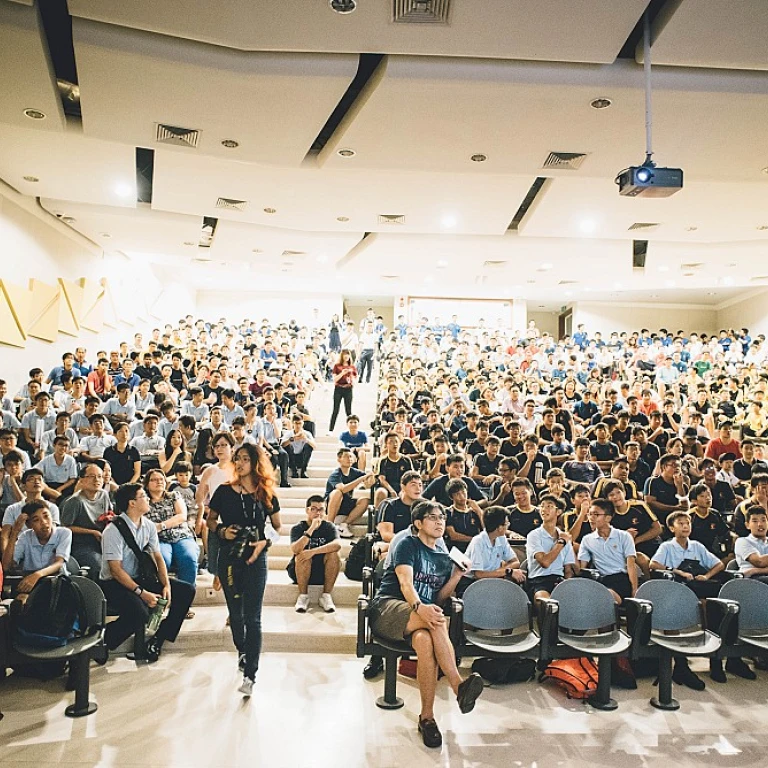
Understanding the Role of AI in Contractor Onboarding
Exploring AI's Transformative Impact
Artificial Intelligence (AI) is rapidly changing the landscape of contractor management, including the onboarding process. As organizations increasingly rely on independent contractors for various projects, the intricacies of contractor onboarding have become more complex. The integration of AI into onboarding software has proved instrumental in streamlining these processes, offering solutions that address time management and compliance while enhancing overall efficiency.
In a workforce increasingly characterized by independent work, organizations need systems that can handle the intricacies of contractor onboarding. AI facilitates the automation of repetitive tasks such as filling out numerous tax forms and enforcing company policies, allowing HR departments to focus more on personalized onboarding experiences. Not only does AI help in standardizing and simplifying the onboarding checklist, but it also provides insightful recommendations and best practices tailored to the organization's specific needs.
Moreover, AI tools ensure that important onboarding documents are easily accessible, enhancing HR document management software. This ensures compliance with company standards and offers a seamless integration into the company culture, thereby creating an encouraging first impression for contractors.
By embracing AI-driven onboarding systems, companies can expedite the onboarding process, improve the new contractor experience, and reduce the likelihood of administrative errors. This shift towards innovation ensures that both organizations and contractors can focus more on the transformative work ahead rather than the cumbersome administrative tasks.
Challenges in Traditional Contractor Onboarding
Traditional Onboarding: A Complex Landscape
When it comes to onboarding contractors, many organizations face a myriad of challenges that can hinder the efficiency and effectiveness of the process. Traditional methods often involve a significant amount of paperwork, manual data entry, and coordination across various departments, making the onboarding process time-consuming and prone to errors.
Administrative Burden and Compliance
One of the primary challenges in traditional contractor onboarding is the administrative burden. HR teams must manage a plethora of documents, including tax forms, company policies, and compliance paperwork. This not only consumes valuable time but also increases the risk of compliance issues if any step is overlooked. Ensuring that independent contractors understand and adhere to company policies is crucial, yet often difficult to monitor without efficient systems in place.
Communication and Integration
Effective communication is another hurdle. Contractors, unlike full-time employees, may not be as integrated into the company culture or systems. This can lead to misunderstandings and misalignment with project goals. Additionally, the lack of a streamlined communication channel can delay project kick-offs and affect overall productivity.
Time-Consuming Processes
The traditional onboarding process can be lengthy, often requiring multiple check-ins and follow-ups. This not only delays the contractor's ability to start work but also impacts the organization's ability to meet project deadlines. The onboarding experience can be further complicated by the need to provide access to various systems and tools, which can be a cumbersome task without the right management software.
Adapting to Change
Organizations must also contend with the challenge of adapting to changes in contractor management best practices. As business needs evolve, so too must the onboarding processes. However, without the aid of modern onboarding software, making these adjustments can be a daunting task.
For a deeper understanding of how a leading company transformed its HR processes with an automated system, you can read more about it here.
AI-Powered Solutions for Efficient Onboarding
Optimizing the Onboarding Process with Cutting-Edge Solutions
Contractor management and onboarding is a multifaceted process requiring meticulous attention to detail. Traditional methods often wrestle with inefficiencies, paperwork overload, and compliance concerns. However, the integration of AI-powered onboarding software has ushered in an era of streamlined operational efficiency, transforming how organizations welcome independent contractors.
Efficient onboarding is critical in setting the tone for a contractor's engagement with the company. AI-driven systems facilitate this by automating the mundane and time-consuming tasks that traditionally placed a burden on HR professionals. With AI, the once lengthy process of managing tax forms, compliance checks, and document verification becomes a seamless and error-free experience.
AI onboarding software optimizes project timelines by automatically generating tailored onboarding checklists and ensuring that all necessary compliance requirements are met in real time. This allows HR departments to focus on personal interactions and cultural integration rather than drowning in paperwork. The automation of these administrative tasks ensures the onboarding will not only be efficient but also compliant with all company policies and regulatory requirements.
The deployment of AI technologies within contractor onboarding systems also brings substantial improvements to the training process. Machine learning algorithms can personalize the onboarding experience by analyzing the specific skill sets and past work of independent contractors, tailoring training modules and project briefings to fit each contractor's needs. This individualization fosters better alignment with company culture and enhances the overall effectiveness of the onboarding process.
AI systems further enable enhanced communication and check-ins, offering instant feedback and updates through digital platforms. This fosters a supportive environment, promoting commitment and motivation among new contractors. By leveraging AI for these processes, businesses can significantly reduce the time and resources required to onboard contractors, thereby boosting overall organizational productivity.
Companies looking to refine their contractor onboarding processes and manage their workforce more effectively can explore AI-driven options as the best solution for managing data and efficiency. These systems not only streamline operations but also enhance the onboarding process, ensuring contractors integrate smoothly into their new environment.
Enhancing Personalization with AI
Customized Onboarding Experiences with AI
In the dynamic landscape of contractor onboarding, personalization is key to ensuring both the efficiency of the process and the satisfaction of contractors. By leveraging artificial intelligence, organizations can tailor the onboarding journey to meet the specific needs and preferences of independent contractors, enhancing the overall onboarding experience.
AI-driven systems can analyze a contractor's past work experience, skill set, and previous onboarding feedback to create a custom onboarding plan that aligns with the contractor's role and the company's requirements. This could include personalized onboarding checklists, streamlined access to relevant company resources, and specific training modules that focus on the project at hand.
Moreover, AI can assist in maintaining real-time communication through automated check-ins, ensuring that both the contractors and the organization are aligned. This can significantly reduce the time and effort required by human resources teams in managing the onboarding process, allowing them to focus on strategic tasks that enhance the business's success.
Personalization also fosters a sense of belonging and engagement for contractors, who may otherwise feel disconnected from the company culture due to their temporary or project-based status. By providing a tailored onboarding journey, companies can not only ensure compliance and efficiency but also promote a strong contractor-company relationship from the start.
Data Security and Privacy Concerns
Ensuring the Integrity of Data in Contractor Onboarding
The integration of AI in the contractor onboarding process elevates not just efficiency but brings forth challenges pertaining to data security and privacy. Given the magnitude of personal and professional information exchanged—ranging from tax forms to company policies—safeguarding this sensitive data is a top priority for any organization employing independent contractors.
Adopting robust data security measures aligns with best practices in contractor management. These measures ensure that onboarding software and management systems remain secure from potential breaches. Implementing multi-layered security protocols such as encryption, secure access controls, and real-time monitoring are critical steps in protecting an organization's operations and workforce.
Many companies are now utilizing AI-driven tools to not only streamline the onboarding process but also enhance the security of the data involved. AI enables more sophisticated data analytics, creating a more secure environment by predicting and preemptively addressing potential threats. This ensures that contractors can focus on their work without concerns over the safety of their personal data.
Compliance with regional and international data protection regulations remains a significant focus. Organizations must ensure that their AI-powered onboarding processes align with relevant legal frameworks, thereby maintaining trust and integrity in their business operations.
As AI technologies continue to evolve, organizations must stay informed about emerging best practices to secure both their systems and the independent contractors they employ. By doing so, businesses can ensure a seamless onboarding experience that prioritizes both efficiency and data integrity.
Future Trends in AI-Driven Onboarding
Anticipating AI Innovations in Onboarding Practices
As organizations continue to take advantage of AI-powered solutions, the future of contractor onboarding seems promising and dynamic. With ongoing developments in technology, several key trends are emerging that will shape how businesses manage their onboarding processes for independent contractors and employees alike.
One significant evolution is the increasing integration of AI into contractor management systems. This integration allows businesses to streamline multiple aspects of the onboarding process, such as compliance checks and personalized training modules, offering a more efficient onboarding experience for independent contractors.
Real-time access to management software enables companies to better monitor projects and payment processes, ensuring that all parties are aligned with the organization's objectives and timelines. As AI continues to mature, the ability to automate and refine these processes will become even more sophisticated.
Another expected development is the enhancement of data analytics capabilities. AI can provide valuable insights into onboarding best practices by analyzing historical data and identifying trends. This empowers organizations to optimize their workflows and improve company culture by fostering an environment of continuous learning and adaptation.
Moreover, the emphasis on data security and privacy will likely intensify as AI tools become more prevalent in HR systems. Companies must stay vigilant in safeguarding personal information and complying with regulations as they implement AI-driven onboarding solutions.
Looking ahead, organizations can expect ongoing improvements in AI technologies that make the onboarding process more seamless and efficient. By staying abreast of these trends, businesses can maintain a competitive edge and ensure the ongoing success of their workforce integration initiatives.
With a focus on enhancing the onboarding of independent contractors, organizations are set to experience a transformative period in HR practices, paving the way for a more interconnected and productive workplace.












